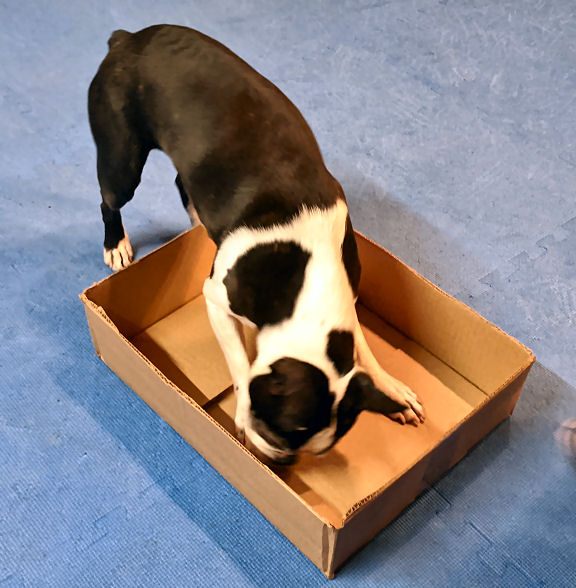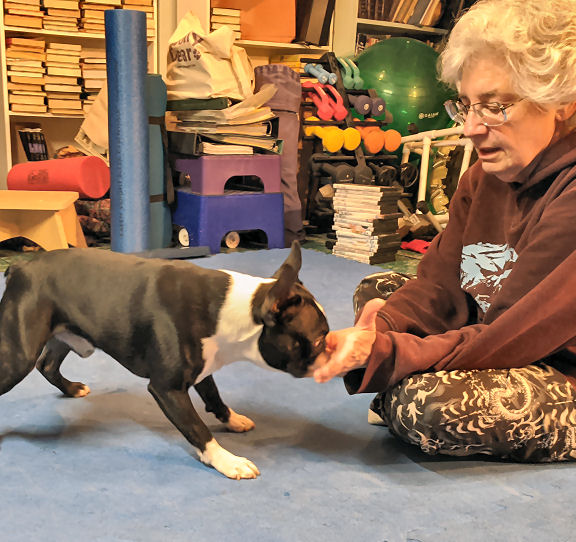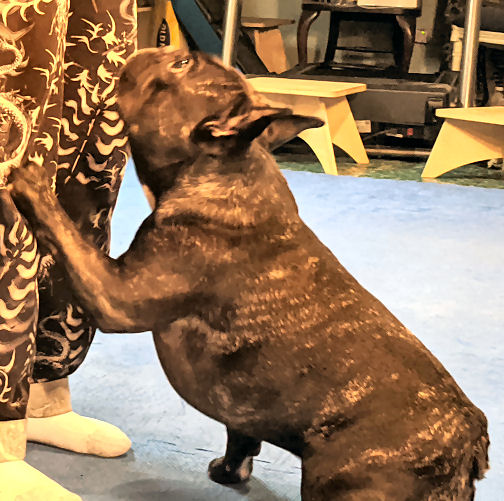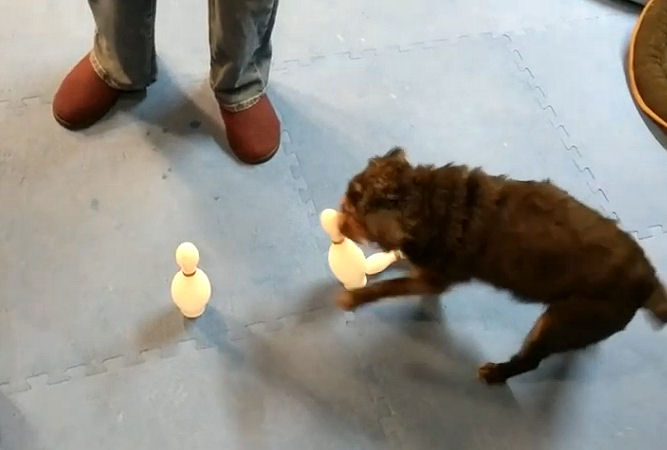Where do you start with dog training games?
It’s a great question, especially if you don’t have an immediate issue to solve and want to start strengthening your relationship with your dog and build your dog’s understanding.
We’ve talked about training natural behaviors and about training for the whole family, but where do you start?
Start with the basics
This week we started training with a family who just adopted a nice little dog. Huey is a young adult Chihuahua/Terrier mix. He’s a nice little dog. Doesn’t mess in the house. Doesn’t bark in the apartment. He doesn’t have any huge behavioral issues. He also doesn’t know how to do much of anything.
Huey is also a smart little guy. When he gets bored and restless, he finds ways to entertain himself. Like stealing a roll of toilet paper and strewing it all over the house.
Tired dogs don’t look for ways to cause mischief. Occupying a dog’s mind, even for two or three 2-Minute dog training games a day, will make sure you have a tired dog. And a tired dog is a good dog. Remember how tired you were after school tests? That’s what 2-Minute dog training sessions are for your dog. But a lot more fun.
Game 1: Here’s a box
The first step is to teach your dog how to learn. And, as part of that learning, trying stuff is okay. As a matter of fact, trying new stuff is fantastic! No matter what your dog does during this game, you’re not allowed to say “No!” You’re also not allowed to make negative noises. You are allowed to re-set.
The stuff you need for this game is a bowl full of treats, your clicker if you use one, and an open box large enough for your dog to sit and/or lie down in, short enough he/she can step into. It can be cardboard or plastic, whatever you have around.
Get your treats, clicker, and box and call your dog. Put the box on the floor between you and your dog. Don’t point at the box, move it, or call it anything at this point. You can stare at the box, and talk to your dog. “What is that thing? What are you going to do about it?” It doesn’t matter if you’re standing, sitting on the floor, or in a chair.
Anything your dog does to interact with the box gets a “click & reward!” Looks at it, sniffs it, nudges it, puts a paw in it – all count. The only thing we wouldn’t reward would be chewing or biting it.
This week you could almost see Huey thinking “What the heck is that? Why should I care?” He ignored the box at first. His mom was patient and just stared at the box. When Huey finally glanced at it, he got a click and a treat, tossed into the box.
Deliver the reward by tossing it in the box. We’re showing the dog that the box has value. Huey was consistently staring at the box after only three or four clicks.
Next on the agenda

Very soon, hopefully within just a few treats, your dog will fall in love with his/her new “goodie box.” That’s when you ask for more.
“That was good! What else can you do?” If your dog just looked at the box, wait for him/her to move it. Or put a paw in. Anything that “ups the ante” with box interaction.
It’s important to keep progress moving. It encourages your dog to try something different, something new. He/she is trying to figure out what will get the treats. Don’t be stingy, but keep moving along.
This sequencing will teach your dog to keep trying new things, using his/her brain and body to push the limits of what he/she knows further. And you’ll both be amazed what your dog can accomplish. If you’ve never seen a dog smile, we can almost guarantee it will happen.
Next week’s tip will continue “Fun With A Box,” expanding the behaviors that your dog may come up with and how you’re both learning that it’s a team game – your dog gets what he wants when you get what you want.



